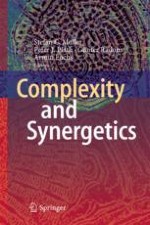2018 | OriginalPaper | Buchkapitel
The Human Dynamic Clamp: A Probe for Coordination Across Neural, Behavioral, and Social Scales
verfasst von : Guillaume Dumas, Aline Lefebvre, Mengsen Zhang, Emmanuelle Tognoli, J. A. Scott Kelso
Erschienen in: Complexity and Synergetics
Aktivieren Sie unsere intelligente Suche, um passende Fachinhalte oder Patente zu finden.
Wählen Sie Textabschnitte aus um mit Künstlicher Intelligenz passenden Patente zu finden. powered by
Markieren Sie Textabschnitte, um KI-gestützt weitere passende Inhalte zu finden. powered by
